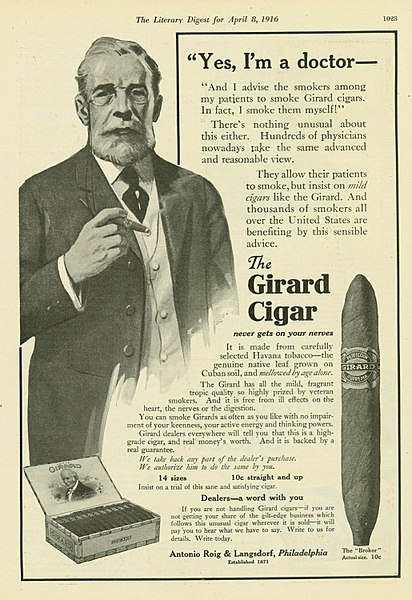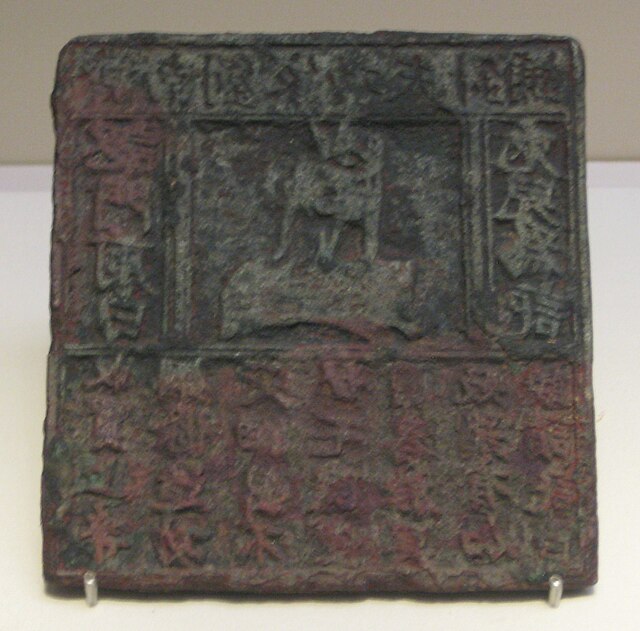False advertising is the act of publishing, transmitting, or otherwise publicly circulating an advertisement containing a false claim, or statement, made intentionally to promote the sale of property, goods, or services. A false advertisement can be classified as deceptive if the advertiser deliberately misleads the consumer, rather than making an unintentional mistake. A number of governments use regulations to limit false advertising.
A 1916 ad showing a fictional doctor endorsing a cigar brand. At the time, it was considered a breach of medical ethics to advertise; doctors who did so would risk losing their license.
1932 Listerine advertisement. The FTC found that the claim of these advertisements, a reduced likelihood of catching a cold, was false.
Marlboro-barcode subliminal advertising on Fernando Alonso's Ferrari F10
Advertising is the practice and techniques employed to bring attention to a product or service. Advertising aims to put a product or service in the spotlight in hopes of drawing it attention from consumers. It is typically used to promote a specific good or service, but there are wide range of uses, the most common being the commercial advertisement.
A commercial on the Berlin U-Bahn that reads: "Did you know... that Wikipedia has more sister projects?", followed by an URL to Germany's Wikimedia chapter
Bronze plate for printing an advertisement for the Liu family needle shop at Jinan, Song dynasty China. It is the world's earliest identified printed advertising medium.
Edo period LEL flyer from 1806 for a traditional medicine called Kinseitan
Poster for Pears soap created under Thomas J. Barratt's leadership, 1900. Victoria and Albert Museum, London







